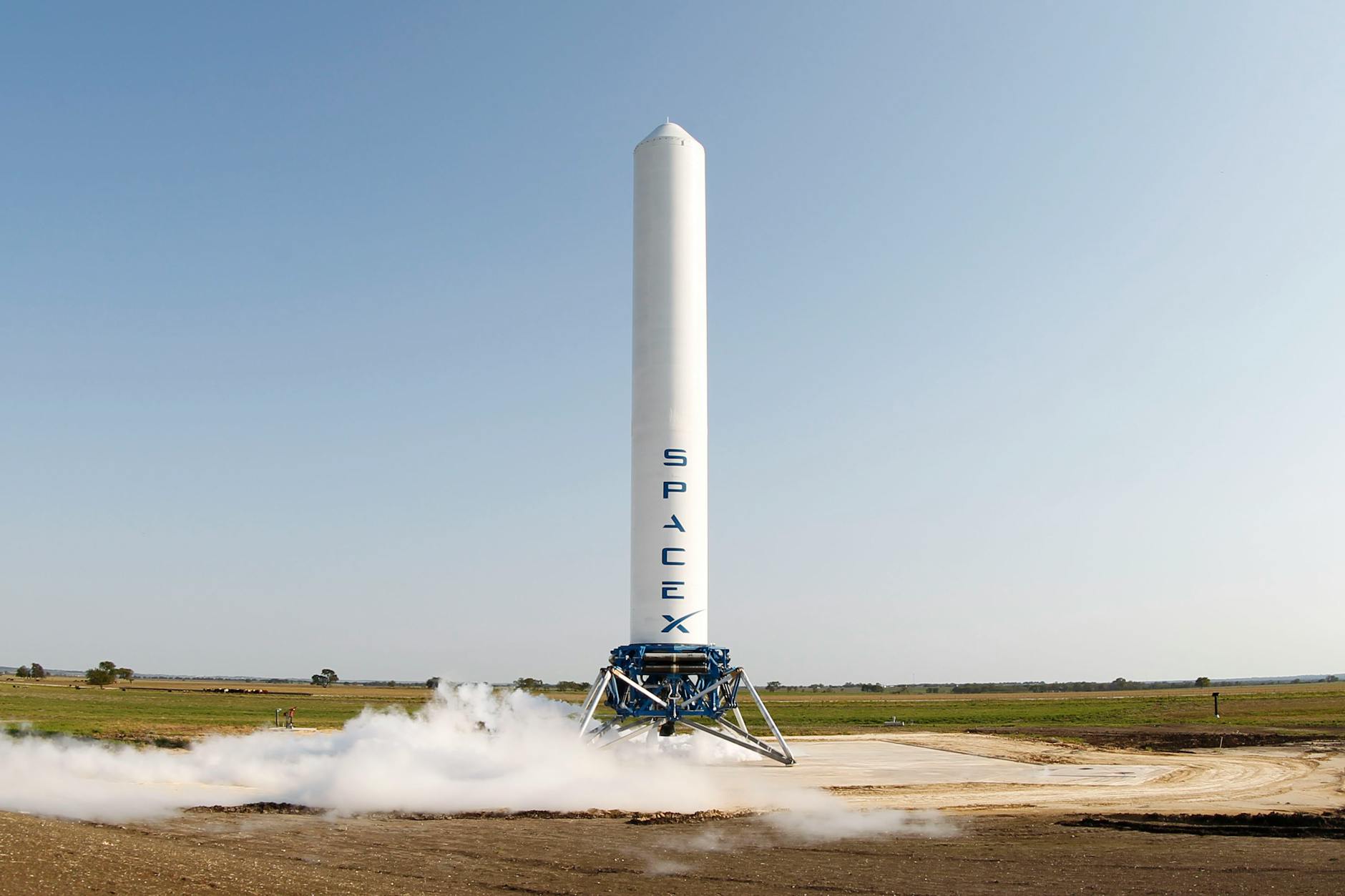How to Invest in SpaceX Shares and Funds in 2025: A Complete Guide
SpaceX continues to capture global attention, with its valuation projected to exceed $200 billion by 2025. As the company remains privately held, many investors are keen to explore their options for gaining exposure. While direct investment may be limited to accredited buyers, there are ways for everyday investors to indirectly participate, such as through ETFs or mutual funds. This guide will break down your options for investing in SpaceX in 2025, helping you navigate this exciting opportunity with confidence.
Understanding SpaceX’s Current Status
SpaceX is a name that has become almost synonymous with the future of space exploration. Whether it’s launching satellites into low-Earth orbit or advancing reusable rocket technology, SpaceX has established itself as a leader in the aerospace industry. But what makes SpaceX tick, and where does it currently stand in 2025?
Company Overview: SpaceX’s Origins and Achievements
SpaceX, officially Space Exploration Technologies Corp., was founded by Elon Musk in 2002. The company was born out of Musk’s vision to make space travel affordable and enable humanity’s colonisation of Mars. Unlike older aerospace companies, SpaceX disrupted the industry with bold innovations early on.
The company boasts a series of firsts:
- First privately funded spacecraft to reach orbit: The Falcon 1, in 2008.
- First private spacecraft to dock with the International Space Station: The Dragon, in 2012.
- First successful vertical landing of a reusable rocket booster: Falcon 9, in 2015.
These accomplishments revolutionised how we think about aerospace efficiency. SpaceX’s current technology portfolio includes the Falcon and Starship rockets, the Dragon spacecraft, and the ambitious Starlink program, which aims to bring satellite-based high-speed internet across the globe.
SpaceX’s Starship, designed as a fully reusable spacecraft, could soon redefine deep space exploration. With contracts from NASA, including missions to land astronauts on the Moon, the company has cemented its importance in the global space industry. Learn more about SpaceX’s innovative history.
Valuation and Market Position
SpaceX’s private valuation has skyrocketed, standing at an estimated $350 billion as of late 2024. Recent secondary share sales have pushed the figure further, solidifying its position as the world’s most valuable private startup. Reports suggest that this growth is driven by multiple revenue streams, including Starlink subscriptions and lucrative government contracts.
What does this valuation mean for potential investors?
- Robust financial footing: Its valuation reflects not just public fascination but also confidence from institutional and private investors.
- Expanding global impact: Growing Starlink subscriptions indicate an increasing reliance on SpaceX technology, making it an enticing target for long-term investments.
- Limited public access: Being privately held, access to direct investment remains a unique challenge.
Although SpaceX shows no immediate plans for an IPO, its market position and financial trajectory draw inevitable comparisons with other tech giants in their early days. For those looking to catch a slice of the action, understanding its valuation and ongoing advancements is crucial. Find out more about SpaceX’s financial status.
Photo by RDNE Stock project
Ways to Invest in SpaceX
As SpaceX remains one of the most intriguing private companies globally, finding ways to invest in it can seem challenging but rewarding. While the company has yet to go public, there are several direct and indirect strategies that allow investors to participate in its growth.
Direct Investment Opportunities
For those who meet specific criteria, buying SpaceX shares directly is possible through private equity platforms. Hiive, for example, is an online marketplace where shares of private companies, like SpaceX, are available for accredited investors. Here’s how to get started:
- Register on a platform like Hiive: Platforms dealing in secondary markets require you to create an account.
- Confirm your status: Only accredited investors qualify, meaning you need to meet certain income or asset thresholds.
- Browse available shares: Secondary markets often list stocks currently held by early employees or other stakeholders wanting to sell.
- Make your purchase: After confirming orders and submitting funds, shares are typically transferred into your account.
For more details on platforms offering SpaceX shares, check resources like Forge Global and Hiive.
Investing Through ETFs and Mutual Funds
For everyday investors who cannot access private equity platforms, Exchange-Traded Funds (ETFs) and certain mutual funds offer indirect investment options. Some ETFs now include private companies like SpaceX. These options make it easier for retail investors to tap into the private sector.
Here are a few examples that include SpaceX exposure:
- XOVR ETF: Known for focusing on innovative companies, XOVR recently expanded holdings to include SpaceX shares through secondary markets.
- ARK Venture Fund (ARKVX): An interval fund with private equity access, catering to investors who want exposure to firms like SpaceX.
- Procure Space ETF (UFO): This ETF includes companies in the aerospace sector, including indirect exposure to SpaceX’s industry influence.
To explore these options, you can read more on sites such as Forbes or Motley Fool.
Indirect Investment via Public Funds
Even without direct access to SpaceX shares, some public funds indirectly hold SpaceX in their portfolios. Venture capital funds and publicly traded investment companies are often the best routes:
- Destiny Tech 100 Fund (DXYZ): This mutual fund is one of the few that holds SpaceX shares alongside other high-tech assets.
- StepStone Private Markets Fund: Offers diversified exposure to private equities, including a partial allocation in SpaceX.
- Cosmos Fund: Another example of a fund investing heavily in space tech and indirectly in SpaceX.
To learn more, consider reviewing resources like SmartAsset or YCharts.
With these strategies, you can find your pathway into SpaceX’s phenomenal growth, even if it’s not a publicly traded company just yet. Each method comes with risks and benefits, so thorough research is essential before making any financial moves.

Photo by SpaceX
Considerations Before Investing
Before diving into investment opportunities related to SpaceX or other private enterprises, it’s essential to approach the process thoughtfully. Here are critical factors to account for, ensuring your strategy aligns with your financial expectations.
Risk Assessment
Investing in a privately-held company like SpaceX comes with unique challenges. Unlike publicly traded companies, private investments often lack transparency, and the accessibility to financial statements is limited. This can lead to increased uncertainty.
The risks associated with these investments include:
- Illiquidity: Selling shares in a private company can be complicated. There’s no stock exchange to facilitate quick transactions.
- Higher risk profile: Private companies may not meet the same regulatory scrutiny as public firms. This means you are more exposed to potential mismanagement or operational failure.
- Valuation difficulties: Estimating the accurate worth of shares in a private business can be challenging. Without a public market to set prices, valuations largely rely on negotiations or financial reports.
SpaceX, as a leader in innovation, certainly holds allure. However, remember that its market dominance today doesn’t mean immunity to competition or setbacks tomorrow. Want to dig deeper into risks of private investments? You can check resources like The Pros and Cons of Investing in Private Companies or Private Investment Benefits and Risks.
Investment Goals and Strategy
Every investment decision should start with clarity on your financial goals. Are you eyeing long-term growth? Or is short-term profit your main aim? Understanding this is key to developing a strategy aligned with SpaceX’s trajectory.
Here’s how you could frame your strategy around SpaceX:
- Assess your timeline: SpaceX’s focus is on long-term innovation—think manned missions to Mars, satellite internet expansions, and more. Are your goals aligned with this vision?
- Measure your risk tolerance: Can you handle potential fluctuations in valuation, especially given the risks of private equity?
- Align with secondary opportunities: If direct access to SpaceX isn’t feasible, consider investing in mutual funds or ETFs that include space exploration as a sector. Options like the ARK Venture Fund offer indirect exposure. Learn more about this approach from resources such as SpaceX Investment Thesis – ARK Funds.
By setting specific objectives and educating yourself on SpaceX’s growth potential, you’ll ensure your investments are strategic and well-informed. Remember, clarity in goals can often be the difference between an investment success story and an expensive lesson.
Future Outlook for SpaceX
SpaceX continues to redefine the potential of private spaceflight and space exploration, showcasing innovation that captivates both enthusiasts and investors. Its ambitious trajectory promises significant advancements and opportunities, further solidifying its status as a leader in the industry. Here’s what the future holds.
Upcoming Projects and Missions

Photo by SpaceX
SpaceX has a packed launch schedule for 2025, aiming to expand its reach and capabilities. These missions are not just headline-worthy but could also boost SpaceX’s valuation and attract more partnerships. Key endeavours include:
- Starlink Mega-Deployment: SpaceX plans to scale its Starlink satellite network, bringing global high-speed internet to underserved regions. According to official sources, some missions will involve launching satellites in newer orbital configurations for lower latencies.
- Starship Lunar Mission: The Starship vehicle is set to support NASA’s Artemis program, with a focus on sending astronauts to the Moon as early as late 2025. This achievement could place SpaceX miles ahead of its competitors. Check out details on Artemis-associated missions here.
- Commercial Payload Deliveries: SpaceX has lined up multiple government and private contracts for launching cargo into space, which could include payloads for scientific research and commercial purposes.
- Space Tourism: The company is also working on initiatives to make space tourism more accessible. Efforts include orbital trips on Dragon capsules as well as exploration ventures with Starship.
A significant milestone ahead is more extensive testing of their fully reusable Starship. Reports indicate that SpaceX aims to achieve over 20 successful launches of this groundbreaking rocket, which could signal a paradigm shift in space travel.
Long-Term Growth Potential
SpaceX’s long-term potential is underpinned by its ability to innovate and disrupt traditional aerospace paradigms. Here are some of the key elements that indicate robust growth ahead for the company:
- Starship Commercialisation: With Starship poised to handle heavy payloads and interplanetary missions, it’s a game-changer for reducing space travel costs. Industry experts predict that by the end of this decade, SpaceX could monopolise deep space transport. Learn more about Starship’s expected impact here.
- Starlink IPO Speculation: Many anticipate a Starlink IPO around 2025-2026, which could inject revenue into SpaceX while giving the public a chance for direct investment. Reddit discussions speculate on how this revenue stream might eclipse existing ones.
- Mars Ambitions: Elon Musk’s vision for a Mars colony remains central to SpaceX’s ethos. While ambitious, increasing Starship test flights and advancements in life-support systems suggest the company may make tangible progress by the 2030s.
- Expanding Satellite Services: With Starlink already seeing explosive growth, SpaceX has opportunities to dominate satellite broadband in rural and underserved areas. Analysts project its revenue figures to climb, as described here.
- Government and Defence Contracts: With proven track records in past NASA and defence missions, government partnerships are likely to expand, further stabilising its revenue streams.
By consistently pushing the boundaries of aerospace technology and securing diverse revenue streams, SpaceX stands well-positioned as a long-term investment opportunity. Its growth isn’t just confined to engineering marvels but spans service innovation and market expansion on a global scale.
Conclusion
SpaceX offers a compelling opportunity for investors in 2025, even without a public listing. Whether through private equity platforms, ETFs, or indirect exposure via mutual funds, there are paths to align your goals with its growth.
Each option carries unique risks and benefits, so careful research is crucial. Assess your financial strategy, evaluate fund choices, and explore secondary markets to make informed decisions.
As SpaceX reshapes industries with its innovations, investing in its future could transform your portfolio. Start today by exploring the available methods and planning your next steps.










